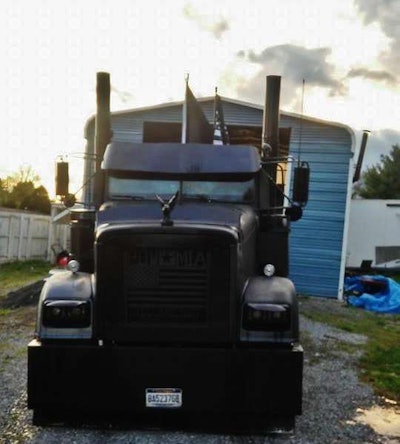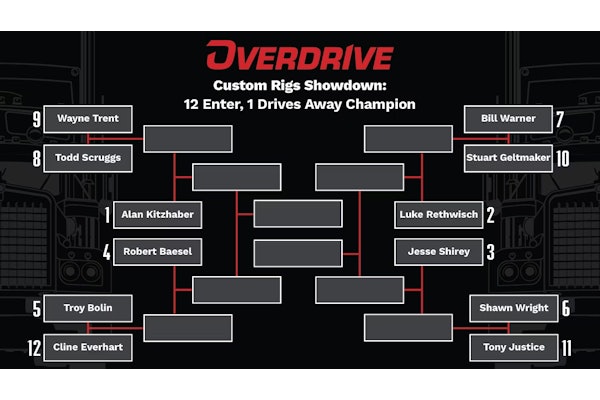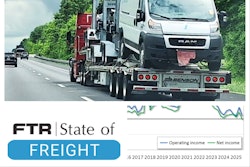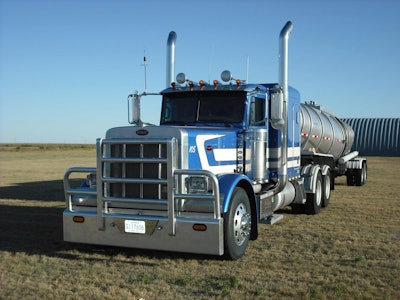
Hauling in a 2007 Peterbilt 379 (pictured) — “one of the legacy class editions,” he says, with a 48-inch flattop sleeper — owner-operator Dan Bollinger just got his own authority early this year. He hauls dedicated for a liquid feed supplier to feedlots in Western Kansas, where he lives.
Formerly hauling under the feed company’s authority but supplying his own cargo and commercial auto liability insurance, when the company offered Bollinger and a group of five other owner-operators the chance to get their own authority and a contract with them, he jumped, mostly on the rationale behind the future potential of expansion. “Later on,” he says, “if more work here at this feed company” materializes, then maybe he’ll “put another truck on.”
Largely a local-hauling operation within a 150-200-mile radius of Garden City, Kan., Bollinger “doesn’t really need the sleeper” on the truck, he says, “but it’s nice for the extra room.” He gets home most every night.
I covered the liquid-bulk tank segment and its many leased owner-operators for the current, November edition of Overdrive. During the reporting, I found that single-truck independents like 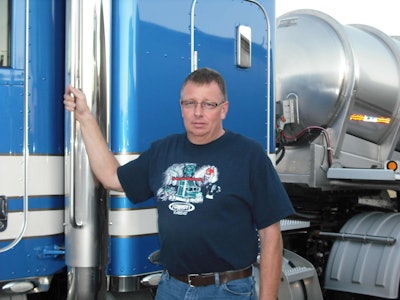

“It needed work,” he says. “The barrel itself was in good shape, but some cross-members in the frame were rusted pretty bad.” In the first year of ownership, he put around $7,000 into refurbishments to get it up to good condition.
Bollinger has “pulled it 760,000 miles in the last six years,” he says, and “if I was to get a new trailer today, I’d keep this around.” The durable stainless steel unit “doesn’t look like it’s got that many miles on it.
“I could easily get $40,000 in resale out of it today. I wouldn’t get hurt on it by any means. A new Polar like this would be around the mid-70s in price. By the time you got it plumbed and set up to work, you’d have close to $80,000 in it.”
While single compartments — the kind of trailer most common among truckload liquid bulk chemical tank operations — are less expensive, Bollinger says, the feed company he works for wants owner-operators to have the ability to run split loads. However, Bollinger says, “most of the time, I’ll have 24 tons of the same product on,” going to one location.
Polar sales manager Willie Graham, an ex-driver himself (off the road since the late 1990s) says a typical single-compartment fertilizer tank might run $55,000 to $57,000, but most tanks can be counted on to last, as Bollinger noted. “Vans and flatbed have a seven-year lifespan,” Graham says. “Tank trailers better last 20 years. Typically one will outlast five trucks.”
It’s hard, he says, for a single-truck owner-operator to succeed with one tank. “In the tank industry, it takes more equipment to do one thing, hard to run around the contry and do one thing with one tank.”
Bollinger’s got that quandary nailed, however. “I do a lot of back and forth. And every day is a little different. There’s very little off-road — most of the time there’s a small portion of the haul on gravel roads — occasionally at the ranches you might be out in a pasture a ways to get to the feed tank.
“It can be labor intensive. You’re loading and unloading several loads a day.” When we talked in September Bollinger was coming into the heavy season for his niche. “Last Friday I drove almost 600 miles and hauled five loads,” he said. “I had my logbook maxed out for those days. The fall and the end of the winter is the busiest time. In the summertime, [cattle are] out on grass. In spring, they’re out on the wheat grass.”
Read more about liquid bulk operations in the November edition of Overdrive.




